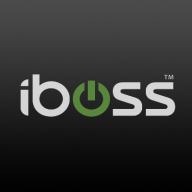


Cisco Umbrella, OpenDNS, and Check Point Harmony SASE are leaders in network security, competing in the secure web gateway market. Cisco Umbrella appears to have an edge with its DNS-based threat protection and content filtering capabilities, combined with investigative features, while Check Point Harmony SASE excels due to its comprehensive security platform and real-time threat intelligence integration.
Features: Cisco Umbrella provides DNS-based threat protection, content filtering, and phishing protection, with features such as domain history investigation. OpenDNS offers DNS layer security, intuitive controls, and low resource overhead. Check Point Harmony SASE integrates Zero Trust Network Access, Secure Web Gateway, and data loss prevention, providing real-time threat intelligence through ThreatCloud.
Room for Improvement: Cisco Umbrella could improve with enhanced integration with external threat feeds, more comprehensive reporting, and additional security features like DLP. Users also request more granular user-level control and improved malware protection. Check Point Harmony SASE could benefit from better third-party integrations, improved mobile support, and more intuitive management interfaces.
Ease of Deployment and Customer Service: Cisco Umbrella is often deployed in public cloud environments, offering generally prompt and professional technical support, though its pricing model can be complex. Check Point Harmony SASE is widely used in various cloud types including hybrid and private clouds, receiving praise for customer service and technical support despite initial setup complexities related to ZTNA.
Pricing and ROI: Cisco Umbrella's pricing is fair but may appear expensive outside the US; it offers significant ROI through improved security and reduced hardware dependency. Check Point Harmony SASE offers a cost-effective solution comparable to industry standards, though it requires a minimum license purchase, potentially limiting suitability for smaller organizations. Both solutions are considered beneficial in terms of ROI by improving security and operational efficiency.
| Product | Market Share (%) |
|---|---|
| Cisco Umbrella | 16.9% |
| iboss | 2.2% |
| Check Point Harmony SASE (formerly Perimeter 81) | 2.5% |
| Other | 78.4% |



| Company Size | Count |
|---|---|
| Small Business | 6 |
| Midsize Enterprise | 6 |
| Large Enterprise | 5 |
| Company Size | Count |
|---|---|
| Small Business | 52 |
| Midsize Enterprise | 18 |
| Large Enterprise | 15 |
| Company Size | Count |
|---|---|
| Small Business | 49 |
| Midsize Enterprise | 30 |
| Large Enterprise | 51 |
Iboss offers a comprehensive cloud-based security platform valued for its scalability and autonomous features, ensuring robust security with easy deployment and management capabilities.
Renowned for its robust security architecture, Iboss integrates seamlessly within diverse networks, delivering efficient granular filtering and advanced content categorization. Its single pane of glass console provides ease of management, allowing rapid scalability suitable for rapidly deploying environments. Operates in BYOD setups due to inline filtering without device installation. Integration with cloud-based applications enhances user control, and features like SASE, SSL inspection, and ChatGPT risk protection stand as highlights. Despite its strengths, users have pointed out areas for enhancement like direct navigation in reports, SSL decryption, and better cloud integration while having room to improve data loss prevention.
What are the most important features of Iboss?The usage of Iboss spans educational institutions, specifically K-12, to enforce internet policies, protect data, and support remote work environments. It provides web filtering and security frameworks to ensure safe browsing. Its platform-as-a-service model offers flexibility for both cloud-based and on-premises requirements, integrating seamlessly to deliver enhanced security features suitable for various deployment needs including zero trust, CASB, and network security for work-from-home setups.
Check Point Harmony SASE, formerly Perimeter 81, offers robust security features like split tunneling, MFA, and Zero Trust Network Access focused on secure remote access and optimized connectivity for remote teams.
Check Point Harmony SASE delivers advanced security through a user-friendly interface, efficient VPN connections, and a centralized management console. It enhances security with real-time threat intelligence from ThreatCloud and traffic management via built-in optimization. Firewall as a Service and Secure Web Gateway safeguard against unauthorized access and phishing. While users seek enhanced networking customizations and better integration with identity providers, there's an emphasis on improving reporting, real-time analytics, and policy management. Requests also include a Chrome extension, traffic balancing, and simplified configuration to address some resource-intensive aspects.
What are the key features of Check Point Harmony SASE?
How can organizations benefit from using Check Point Harmony SASE?
Check Point Harmony SASE is used across industries for secure remote access and connectivity, protecting sensitive data, and managing access to corporate resources. It is ideal for those with hybrid cloud models and requires comprehensive security measures combined with existing IT infrastructures to meet specific industry demands.
Cisco Umbrella delivers rapid DNS security with over 30,000 customers, providing outstanding threat protection and handling more than 600 billion requests daily. It's recognized for high threat efficacy in the SSE domain and integrates elements like SWG, ZTNA, CASB, and more.
Cisco Umbrella is renowned for its effective DNS-layer security against ransomware and phishing. It offers flexible content filtering and integrates seamlessly with existing networks while providing single-pane-of-glass management for centralized monitoring. Its robust threat intelligence and customizable policies are central to its appeal. Users highlight room for improvement in areas like WHOIS data inclusion, malware enhancement, and reporting analytics. Integration with other threat feeds and better client support are requested for more comprehensive coverage.
What are the key features of Cisco Umbrella?
What should users expect in reviews about Cisco Umbrella?
Industries implement Cisco Umbrella primarily for DNS-level security, web filtering, and protecting remote employees. It strengthens cybersecurity frameworks by blocking malware and avoiding access to harmful sites. The tool is widely integrated with Active Directory and Cisco Meraki, providing consistent internet security for employees.
We monitor all Secure Web Gateways (SWG) reviews to prevent fraudulent reviews and keep review quality high. We do not post reviews by company employees or direct competitors. We validate each review for authenticity via cross-reference with LinkedIn, and personal follow-up with the reviewer when necessary.